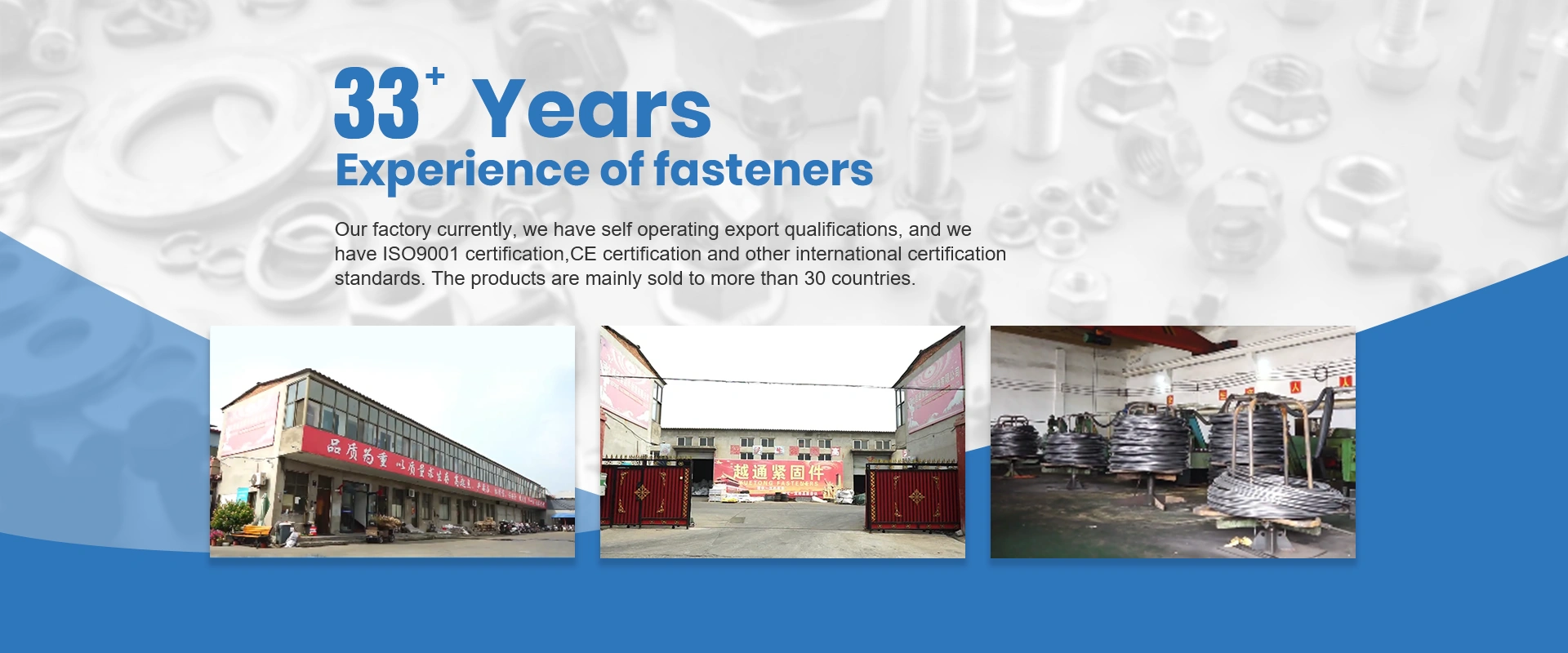Oct . 11, 2024 11:06 Back to list
chemical anchor fastener
Chemical Anchor Fasteners An Overview
Chemical anchor fasteners, also known as adhesive anchors, are crucial components in construction and engineering that provide secure and durable fastening solutions. These anchors utilize a bonding agent, generally a two-part epoxy or polymer, to create a strong connection between the anchor and the base material, such as concrete or masonry. This technology has revolutionized how structures are anchored, offering significant advantages over traditional mechanical anchors.
The Mechanism Behind Chemical Anchoring
Chemical anchors work by embedding a threaded rod or rebar into a pre-drilled hole in the substrate. The hole is then filled with a specialized chemical adhesive. Once the adhesive is injected and the anchor is inserted, a chemical reaction occurs, which leads to the curing of the adhesive. This results in a bond that can withstand substantial tensile and shear loads. The strength of this bond is often superior to that of mechanical anchors, especially in applications where vibration or dynamic loads are present.
Benefits of Chemical Anchor Fasteners
One of the primary benefits of chemical anchor fasteners is their versatility. They can be used in various applications, including securing structural steel, attaching heavy equipment, and anchoring walls and ceilings. Additionally, these anchors are ideal for use in challenging environments, such as underwater or in extremely hot or cold conditions, where traditional anchors might fail.
chemical anchor fastener

Moreover, chemical anchors are less likely to cause cracking in the base material as they distribute loads more evenly. This is particularly important in concrete, where mechanical anchors can create stress points that lead to structural weaknesses over time. The ability to control the bond strength through the selection of the appropriate adhesive makes chemical anchor fasteners highly customizable to meet specific project requirements.
Installation Considerations
While chemical anchors provide numerous advantages, their installation requires careful attention to detail. The substrate must be clean and dry to ensure optimal adhesion. Installation involves drilling a hole of the appropriate size and depth, followed by cleaning the hole to remove dust and debris. The correct amount of adhesive must be mixed and injected, and the anchor should be firmly inserted without excessive twisting, which could compromise the bond.
Environmental conditions can also impact the curing process of the adhesive, so it is crucial to adhere to the manufacturer's guidelines regarding temperature and humidity. Ensuring adequate curing time before applying any load is essential to achieve the desired strength.
Conclusion
Chemical anchor fasteners are an innovative and effective solution for various anchoring needs in construction and engineering. Their ability to offer strong, reliable connections in numerous applications makes them indispensable. By understanding their mechanics, advantages, and proper installation procedures, builders and engineers can harness the full potential of chemical anchors to enhance the safety and longevity of their structures. As construction technology continues to evolve, the role of chemical anchor fasteners is likely to become even more significant, paving the way for safer and more robust designs in the future.
-
The Ubiquitous Reach of DIN934 in Application Realms
NewsMay.16,2025
-
Exploring Different Bolt Types
NewsMay.16,2025
-
Cracking the Code of Sleeve Anchor Mastery
NewsMay.16,2025
-
Clamp Design Principles,Types and Innovations
NewsMay.16,2025
-
Artistry Inspired by the Humble Anchor Bolt
NewsMay.16,2025
-
A Deep Dive into Screw Types
NewsMay.16,2025


